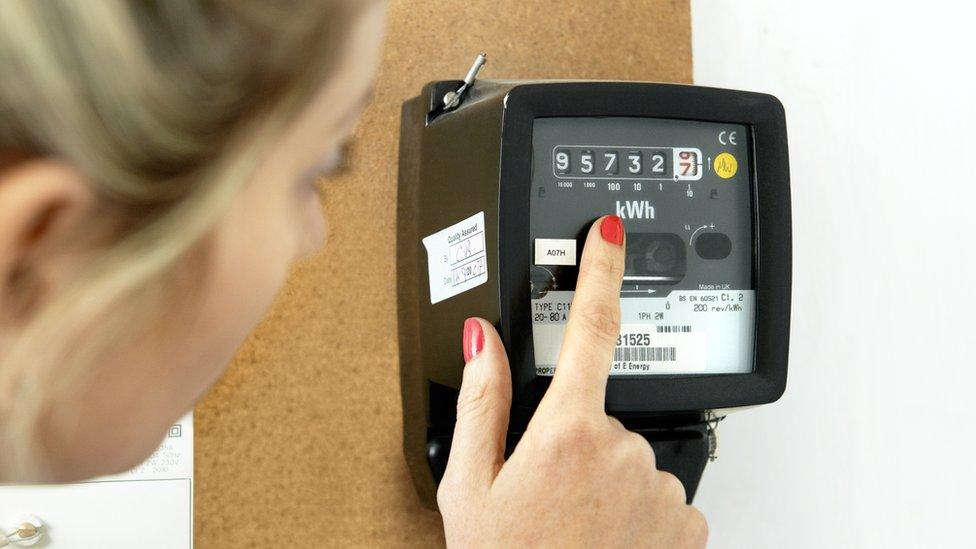Electricity market review to provide cheaper prices
- Published

The government is considering options for reforming the way the price of electricity is set for households.
Changes could allow households to get energy from the national grid at cheaper rates if demand is low or when the weather means more is produced.
The review of the UK's electricity market comes as energy bills have soared in recent months.
The government will also consider how pricing can be "de-coupled" from gas prices, which have caused higher bills.
On Monday, the Department for Business, Energy and Industrial Strategy (BEIS) published a consultation outlining changes it believes could "cut costs of electricity for consumers" after almost a year of preparations.
Energy bills for typical households jumped by £700 to a record £1,971 in April, driven by global gas prices surging following Russia's invasion of Ukraine.
Prices are set to rise further this year, with experts at Cornwall Insight predicting average bills could leap to £3,245 in October and then further to £3,364 at the start of next year.
It is understood that some potential changes within the government's review of the electricity market could be implemented as soon as the middle of next year.
The review will consider possible changes such as locational pricing, which could result in households in areas with significant levels of renewable energy production, such as Scotland, being able to purchase energy at cheaper rates.
The government said it was consulting on plans for suppliers to introduce incentives for consumers to "draw energy from the grid at cheaper rates when demand is low" or it's particularly sunny and windy, which would enable houses to save money on bills.
Plans also include improving storage systems for intermittent electricity generation such as wind and solar which would mean gas-fired powered stations would no longer be the main back-up, and so the price of wholesale gas would have less impact on the pricing structure.
Under the current system, gas prices often end up setting the wholesale electricity price, the government said, because it is often the last source of supply to meet demand.
The government has pledged to slash its use of gas and other fossil fuels imports as part of efforts to improve energy security, but also to transition towards putting less carbon into the atmosphere.


It's never been more important to switch to an electricity system with renewables as the baseline, both for the planet and to have a more reliable source of power. But it's hard to think of a more difficult time to make that switch happen than now, as customer's budgets are already stretched to the max.
Connecting remote renewable turbines costs money, getting the power to where it's needed, and storing it until it's used costs money.
Often the government add those costs onto all our energy bills, as extra systems charges, or green levies. But right now, millions of people wouldn't be able to manage an extra energy charge, even when the outcome would be cheaper bills in the long-term.
So how to make the big shift in the nuts and bolts behind the scenes without cranking up the bills? This review has some interesting suggestions. It's still a long-way off implementation, but it's setting a direction of travel for government.
Incentivising households and businesses to produce more of their own power, store it themselves, sell it back to the grid, and use more electricity at night and less at peak moments.

Business and energy secretary Kwasi Kwarteng said the price of offshore UK wind power had fallen to "an all-time low", adding gas was a "shrinking portion of our electricity generating mix".
"We need to explore ways of ensuring the electricity market is adapting to the times," he said.
"That includes ensuring the cost benefits of our increasing supply of cheaper energy trickle down to consumers, but also that our system is fit for the future, especially with electricity demand set to double by 2035."
There are now more than 11,000 wind turbines on and offshore, which produce nearly a quarter of the UK's electricity.
And there is plans for a huge upgrade of the UK's electricity network which would see a host of pylons and cables transporting power from offshore wind farms around the UK.
Related topics
- Published7 July 2022

- Published27 June 2022
